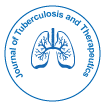Trends and Treatment Outcome of Tuberculosis Patients in Assella Hospital from July 2011-June 2017, Oromia, Ethiopia, Seven Year Retrospective Study
Received Date: Dec 20, 2017 / Accepted Date: Jan 17, 2018 / Published Date: Jan 23, 2018
Abstract
Background: Tuberculosis (TB) is preventable and completely curable major public health problem in the world. Even though the number of TB death decreased by 22% in the past fifteen years it remains one of the top 10 causes of death and the leading cause from a single infectious agent, ranking above HIV/AIDS. It is the largest killer among communicable diseases in age group of 15 to 49years, when humans are most productive. Ethiopia is among the 22 high TB- burden and among the 27 high MDR-TB burden countries in the world with case detection and treatment outcome vary across regions.
Methods: A retrospective cohort study was conducted by reviewing medical record of tuberculosis patients who were treated in Assella hospital from July 2011 to June 2017. Descriptive statistics, both bivariate and multivariate logistic analysis was done using Stata statistical software. Odds ratio with 95% confidence intervals were calculated and P-value less than 0.05 was considered statistically significant.
Results: A total of 756 patients were treated in Assella hospital of which 55.7% were male and 87% were from urban. About 60.4% were with age group 15-34 years mean age 30.5 ± 15.7. With some ups and downs the case notification rate decreases through time and the mean treatment success rate was 84.9% with defaulter, death and treatment failure rate of 9.7%, 4.2% and1.2% respectively. Almost all 92% of cases were identified through passive case detection after the patient present with clinical symptoms. Age, contact person, type of TB and year were identified as statistical significant factors for treatment outcome.
Conclusion: The mean treatment success rate was good but case detection rate was decrease trough time so the hospital needs to consider active case detection and improve defaulter tracing mechanism. Significant number of hospital staffs is being infected with TB so concerned health authorities including professionals need to give emphasis on the identified factors and on infection prevention control. Further study is recommended in retrospective design to include other predictors.
Keywords: Trends; Factors; Tuberculosis; Treatment outcome
Citation: Fisseha HZ (2018) Trends and Treatment Outcome of Tuberculosis Patients in Assella Hospital from July 2011-June 2017, Oromia, Ethiopia, Seven Year Retrospective Study. J Tuberc Ther 3: 112.
Copyright: © 2018 Fisseha HZ. This is an open-access article distributed under the terms of the Creative Commons Attribution License, which permits unrestricted use, distribution, and reproduction in any medium, provided the original author and source are credited.
Share This Article
Open Access Journals
Article Usage
- Total views: 3999
- [From(publication date): 0-2018 - Apr 03, 2025]
- Breakdown by view type
- HTML page views: 3157
- PDF downloads: 842
